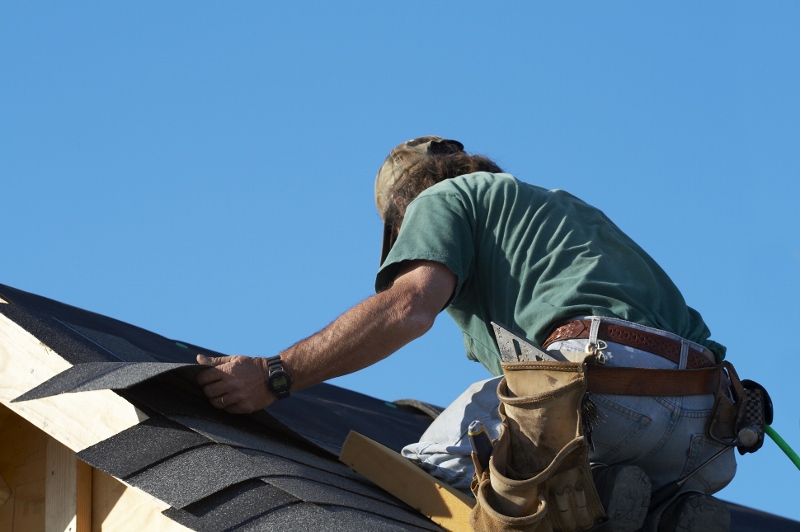Roof updates are important, especially in the winter when snow and ice can damage your roof. Here are some important steps to ensure your roof is in proper condition to withstand winter’s cold temperatures.
A roof is the largest single covering on any building, so it must be inspected to ensure it functions properly. A winter roofing inspection checklist is a list of things that a roofing inspector will typically check to evaluate the condition of a roof. It includes checking for loose shingles, loose chimneys, water damage, and other potential problems. This is intended to be a guide rather than a set of rules.
Items for General Inspection
- Verify the roofing materials’ quality (shingles, bald spots, loss of granules, or severe curling)
- Check the roof’s flashing (properly flashed, sealed, and watertight)
- Look for openings, cracks, or other exposed spots on the roof.
- Examine the roofing materials for degradation and leaks.
- Keep an eye out for deteriorating trim and fascia.
- Check out for rot, fungus/moss growth, mildew, and mold.
- On the roof, look for rust or any broken or cracked parts.
- Visually examine the skylights, vents, and chimney.
- While you’re at it, examine the door and window seals.
Debris and Gutters
- Clear the roof of all rubbish (leaves, pine straw, dirt, rocks, etc.)
- Check functionality and clean the gutters.
- Check the drainage system for damage and obstructions.
- Check for debris in the downspouts.
- In the winter, keep an eye out for any regions or objects that can result in a water or ice dam.
Interior Inspection
- Look for leaks, water damage, and water stains while inspecting the interior of your home through the attic and crawl area.
- Check the floor, walls, and ceiling for any damage.
- Check the insulation in your house for mold and damage.
- Verify the ventilation in the attic.
- Ensure that all vents are free from debris.
- Keep an eye out for any strange drafts and the airflow.
When should you get your roof inspected?
Although it might not seem like something you should worry about at the moment, roof inspections are important. They can assist you in determining the level of damage to your roof and how much it will cost to repair. Mostly, they are very affordable and can be done with relative ease. A regular roof inspection is recommended, especially if you live in an area with heavy winds or snowfall. Inspecting your roof every early fall and spring is also advisable.
Why You Should Inspect Your Roof Every Early Fall
The best time to inspect your roof is before the snow falls. This is because, in warm temperatures, it is easy to spot problems with your roof, such as cracks, holes, and missing shingles. This can help you avoid spending a lot of money on repairs later. By inspecting your roof now, you can take preventative measures to ensure that your roof does not have any potential problems before winter.
Why You Should Inspect Your Roof After Winter
Winter is a beautiful season but also one of the most deadly. Inspect your roof for damage after a long, cold winter. It may appear to be a lot of labor, but the rewards are well worth it. After a long winter, it is important to inspect your roof for any damage that might have occurred and make sure that your roof is safe to use. If you notice any holes in your roof, a leak, or damage to the shingles, you should call a professional and get it fixed. If your roof is inspected, you can avoid being stuck with a bill that could be thousands of dollars.
Signs of Damaged Roofs
Roofs are not just for keeping out the rain and snow but also for keeping out the heat and cold. Roofs are an important part of your house, so it’s time to act when you notice that your roof is damaged. A damaged roof can cause many issues, such as leaks and water damage. Signs that your roof might be damaged include patches of missing shingles, faded paint, nails protruding from the roof, or any other visible damage. If you see any of these indicators, it is best to call a professional immediately to ensure that your roof is in the best condition possible.
Roof Inspection After Installation
After installing a new roof, it is important to have it inspected by a professional. The roofing company will ensure the installation was done correctly and inspect the roof for any damages. If the roof has any damages, the company will need to make the repairs.
Even if your home or office building appears to have weathered the winter storms just fine, it’s important to get a professional roof inspection as soon as possible. Early detection of any problems will save you time and money in the long run. Use our checklist as a guide for what to look for, and when in doubt, always contact The RoofPro! We would be happy to come out and take a look.


